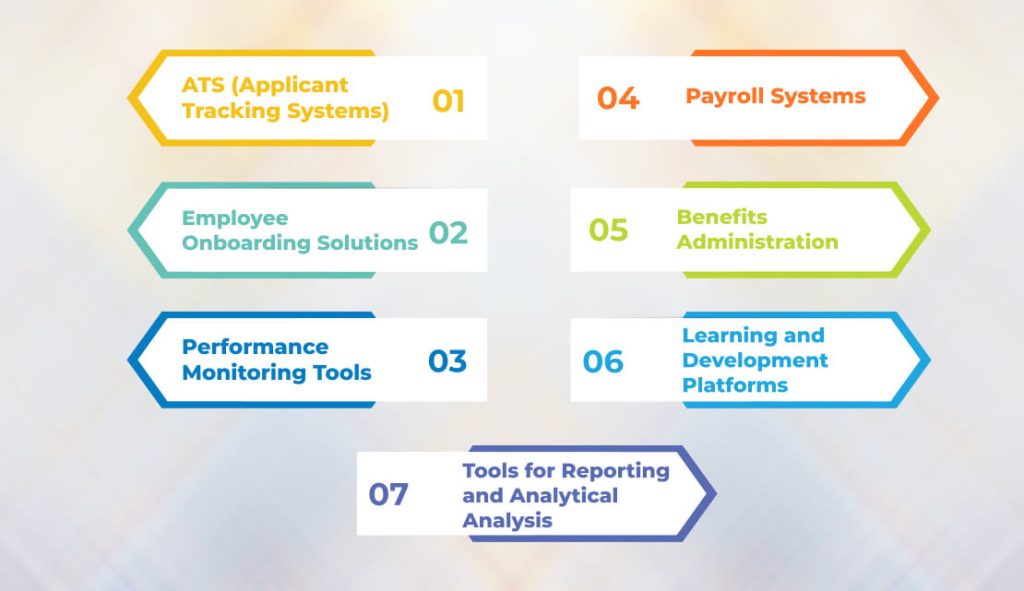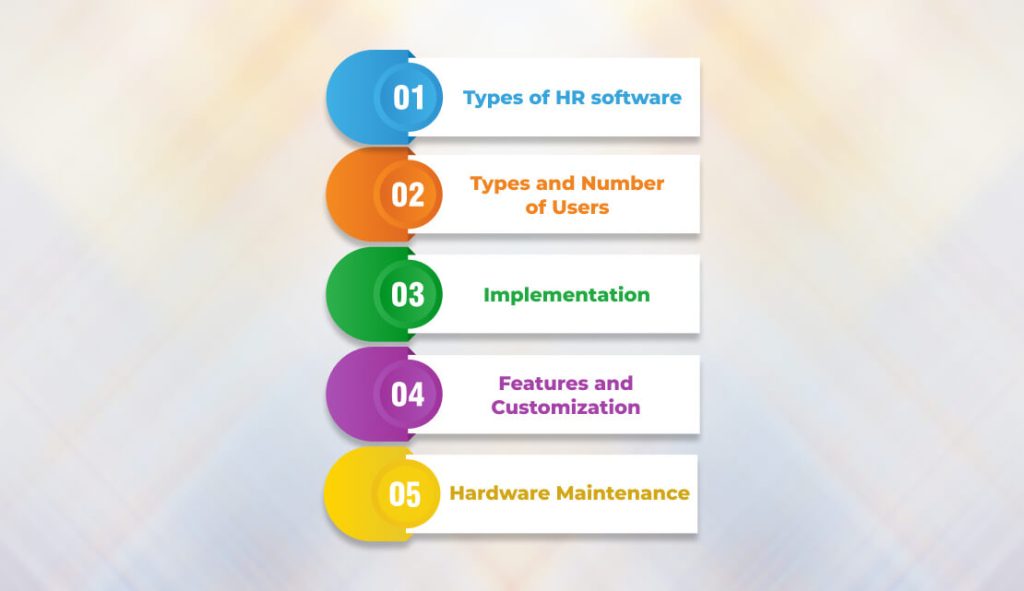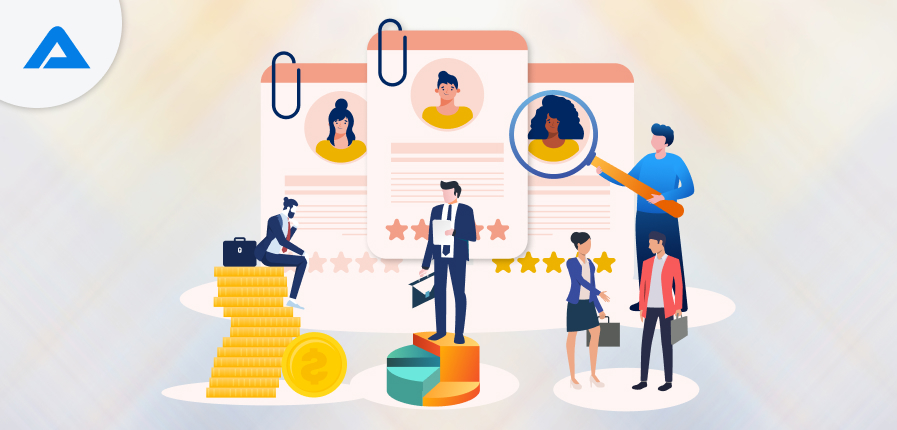Human Resource Management (HRM) is a primary asset in any organization, regardless of its industry or size. HR software development services are used to streamline HR management systems. The process of hiring, training, and managing staff has been transformed by the advent of HRMS software.
The human resources team, although it is a department that everyone considers very casually in an organization, is responsible for completing small, but important tasks such as recruiting new employees and managing employee training, retaining existing employees, supervising, etc.
HRM software is growing quickly, with an estimated CAGR of more than 10% until 2028. This market will surpass $33 billion. It is no surprise that HRM software is a vital component of businesses of all sizes. Automating manual HR processes can save organizations time, reduce costs, and increase efficiency.
Human resource leaders and employees are the primary users of this software, as they are responsible for daily operations and compliance reporting and also manage workforces. This article provides more information on human resource management software.
What is Human Resource Management System?
Human Resource Management System is a term that refers to a range of software, including Human Capital Management and Human Resource Information Systems. These programs help HR staff manage the most important asset of any organization: its people. Manually performing HR tasks is time-consuming and complex. A technological solution such as an HRMS will help you to save time, reduce costs, and better manage your employees.
You could choose a simple HR Management software that will take care of your day-to-day administrative needs like Employee Management and Leave Management. You could also choose a solution that addresses strategic aspects of human resource management such as Training & Development and Performance Management.
When choosing the best Human Resource Software, it is important to consider key features such as an intuitive interface that will provide an incredible experience, integration with existing apps and software, scalability, and customer service.
Different Types of HR Software

You need a core system that manages all your employee data, whether you are a small company or if you are a multinational corporation.
What type of software is right for your business depends on its size:
ATS (Applicant Tracking Systems)
The HR team receives a large number of applications, with an average of 118 applicants for each job. ATS and recruiting software can be used to optimize the recruitment process.
These tools are designed to automate repetitive tasks such as posting jobs, screening resumes, scheduling interviews, and correspondence.
These large and mid-sized companies need an advanced and scalable applicant tracking system (ATS), such as Greenhouse or Jobvite. These tools include HR features like automated workflows and candidate relationship management.
Employee Onboarding Solutions
A smooth onboarding experience leads to 18x greater workplace commitment among employees than those who have undergone a less effective process. This shows that an easy onboarding process is crucial to employee engagement.
Software for employee onboarding helps new employees integrate into an organization smoothly. The software provides new hires with all the information they need, including training materials and system access.
It simplifies communication and reduces administrative tasks for HR. BambooHR’s onboarding and offboarding tools, for example, have an electronic signature built in that tracks signatures. So, employees do not have to fill in mountains of paperwork on their first day. Bonus: The software also includes templates for new-hire packets.
Performance Monitoring Tools
According to Gallup, it is important to provide meaningful feedback at least once a week. Feedback should be provided immediately following the action.
To maintain the pace suggested, HR staff needs performance management tools that track employee output and set goals, monitor their progress, provide feedback, and review their results.
Leapsome, Lattice and other tools facilitate individual and team performance reviews. They identify areas for improvement and acknowledge credit where credit is due.
Payroll Systems
Just two payroll mistakes are enough to make an employee look for a new job. The US Internal Revenue Service has assessed an additional $23.8 billion for late filings.
Payroll systems automate the process to avoid the chaos that can arise when combining a complex procedure with manual operations.
Payroll software such as Gusto and Rippling helps employers calculate and distribute salaries, taxes, deductions, and employee benefits as well as comply with tax regulations. Attendance tracking modules are also available in tools like Gusto. Paid time off, sick days, and other leaves will be automatically calculated during payroll processing.
Integrate your HR platform with your payment platforms. Integration allows payroll data, tax information and deductions to be automatically transferred from your HR system to your payment platform. This ensures that employees are paid accurately and on time, and it reduces the possibility of errors.
Benefits Administration
Recent employee surveys have revealed a lower level of satisfaction with benefits, which is characterized by a 2 percent decline in 2023. This is the lowest level in over a decade. Despite this, 83% claim that their employees are happy with their benefits. Benefits management software can help to close the gap.
Tools for managing benefits promote compliance with government regulations. These tools also simplify program enrollment, employee eligibility tracking, payroll deductions, and more. Rippling, for example, also offers support to third-party brokers. ADP Workforce is one tool that analyzes which employees are most valuable, and you can focus on them to reduce costs.
Learning and Development Platforms
89% of L&D experts believe that proactive preparation for employees today and tomorrow will help them navigate the workplace in the future. Learning and development tools are crucial in creating a highly competitive workforce today in a dynamic environment.
These tools help employees to improve their skills and stay abreast of the latest industry trends. These tools help companies align their employee performance to both short- and longer-term goals.
Platforms for learning and development often have key features such as certification tracking and progress monitoring. There are many types, including learning management software and learning experience platforms. Other options include course authoring tools and virtual training tools.
Tools for Reporting and Analytical Analysis
HR data can be used by employers to track employee lifecycles, recruitment success, staff turnover and diversity at work. Human Resources Information System (HRIS), and Human Resource Management System HRMS are two tools that can be used to gather data. Both systems track and maintain employee information.
Software for human resources can produce real-time data on key metrics, such as turnover rates, compensation analysis, and demographics. Combining data and analytics can create clear narratives that promote data-driven decisions.
Process of HRMS Software
Human Resource Management System Software (HRMS) is an important aspect of the modern organization. It helps to manage employees and improve efficiency. HR software development solutions are comprehensive for integrating human resource functions and streamlining processes. It also facilitates the management of employee information.
HRMS software is crucial in automating HR tasks. From payroll processing to performance evaluations and recruitment, it plays a key role. This introduction will explore the key components and functions of the HRMS process. These contribute to an effective administration of Human Resources within an organisation.
Applicant Tracking System (ATS)
The Applicant Tracking System automates your recruitment and improves it. From receiving the candidate database to hiring. ATS allows you to streamline the process of storing candidate details, job listings, and interview schedules. You can create a Visual Pipeline to manage the recruitment workflow and automatically send emails to candidates.
Employee onboarding
HR must provide the new employee with all the necessary details about the company after they have been hired. Employee onboarding is a process that helps new employees familiarize themselves with the company, its culture, and its people. Employee onboarding gives the company the chance to make the new employees feel like they are part of the family.
Employees’ Engagement
The process of improving the employee’s natural nature to produce productive work. HR’s role is to fulfill every employee’s needs and find out any issues. The organization’s goals and the employees’ needs should be on the same page. HR is responsible for taking effective measures such as team-building and appraisals, performance management, etc. This can be adapted to increase employee satisfaction.
Employees’ Time Management
It is essential for productivity and growth that HR tracks the time and attendance of employees on any given day. A Human Resource Management System allows you to store data on a central server using biometrics. It will then give you the option of a Timesheet, where your employee can input their daily tasks and project work.
Leave Management
Human Resource Management System allows you to create a company’s travel and leave policy, including employee benefits such as leave, reimbursements, etc. With an approved workflow. This system allows your managers to approve directly from the application, without HR involvement.
Watch Performance
The performance of employees is a key factor in the future growth of any company. For achieving goals, it requires more attention. The software HRMS allows the organization to track employee performance by using various measures such as KPI, KRA, etc. It also keeps track of employee goals and tasks. Human Resource Software allows HR to track employees who require more training or promotion.
Training & Development
You can decide whether your employees require additional training by keeping a constant watch on their activity. The Human Resource Management System makes it easy for HR to maintain and distribute schedules for development & training.
Payroll management
If HR does this manually, they will make an error. HRMS provides a platform for HR that allows them to calculate payments in an error-free and efficient manner. In just one click, HR must enter all of the data needed to calculate your monthly salary. The Human Resource Management System will calculate your payroll, which includes all deductions, incentives, and tax exemptions.
Reports on Management System Information
The HR department generates a MIS report to keep track of all strategic functions. This is essential for any organization. HR can mark the time on your schedule before you need to generate a report so that you don’t have to remember its date.
Offboarding
One day, the one who came will leave. When an employee resigns, HR must perform a final settlement. Human Resource Management Software can help you generate a resignation. HR should inform employees that they must return any assets received from the company before leaving the office. They also need to complete their payroll and inform them of the retirement benefits. Human Resource Management Software creates a new vacancy automatically in the system for every employee exit.
Factors that Affect the Cost of Developing HRMS

The cost of HR software development is determined by a number of factors including the type and number of users of the software, its features, implementation plans and hardware, and maintenance. Let’s look at some of the factors below that influence the cost of HR software.
Types of HR software
Costs will vary depending on the type of HR software that a company needs. Costs of integrated software, which includes payroll, benefits, and recruiting, are higher than separate HR systems. The cost of software development cost can also be very different depending on the package that a company chooses.
Human Resources Information Systems are the least expensive and can handle most HR processes. As companies grow, HRMS and HCM can provide greater functionality. These solutions are the most expensive on the market.
Types and Number of Users
How much HRMS software costs is often determined by the number of users. The number of users is often used by vendors to determine pricing. HRMS software with a subscription pricing model, especially those that offer self-service capabilities, allows companies to pay more or less per month depending on their employee count.
Different manufacturers define “users” differently. Some suppliers define users as employees who maintain data in the system, such as those in HR, IT or management.
The cost of HR software may increase or decrease depending on how the vendors define their users.
Implementation
Companies may be charged an implementation fee, depending on the vendor. Installation, data migration, and implementation specialist support are usually included in the fees. Companies should also consider indirect costs such as time spent by IT and HR staff on implementation projects.
Features and Customization
The cost of an HRMS solution increases as a result of adding more features. Most solutions include a base set of features plus “add-ons”, which provide customization and extra functionality. The price of the HRMS software may be increased by adding integrations, custom workflows and add-ons. The company should determine which HR features they need and which can be put off until later when budgets permit.
Hardware Maintenance
The cost of implementation may increase if the company decides to use internal servers instead of new computers for the HRMS. Vendors may charge additional fees for security patches, feature upgrades or system upgrades.
Businesses with their own IT department do not have to worry about the cost of software, but how much time IT takes to maintain the software can affect the ROI.
Training
HRMS vendors may include training as part of their fee, but they can charge extra for any additional training or suggestions for improving workflows. Costs can be affected by the time HR staff spends away from other tasks to train employees or to hire more staff to support the new system.
Fees for consultants providing HR support or software are included in the costs of hiring software developers. In the United States, consultants charge an average of $150 per hour. However, the cost can vary greatly depending on project scope and timeline. Companies may hire consultants to help them with software selection or outsource certain tasks like hardware maintenance.
How Much Does the HRMS Development Cost?
The cost of software development services varies around the world because each company sets its own rates. Rates are determined by the location of the company and the expertise of its engineers. To give you an estimate of the cost of HR Management software, we have used a $15 industry average per developer hour.
We recommend that if you are looking for HRMS Software Development you begin by separating costs for different models of human resource management.
- The cost of the recruitment module ranges between $5,000 and $10,000.
- The module costs between $6,000 and $5,000.
- benefits management module: around $10,000-$14,000;
- The cost of the payroll module is between $10,000 and $20,000
The cost of developing HR Management software can vary from $10,000 to $25,000 or more, depending on your company’s needs.
The Key Takeaway
Determining the cost HR software development and staffing applications is a complex task that involves careful consideration of many factors. The final cost is influenced by the complexity of the software as well as the desired features, the time required for development, and the experience of the team.
A well-designed HR and staffing solution will improve efficiency and enhance workforce management. Although the cost of a customized software solution may vary depending on the individual’s needs, it is an investment that will benefit HR processes in the long run.
Human Resource Management Software can be an extremely powerful tool for any organization. India is also the place to go if you need HR software but are on a budget.
A top-notch HR software development company that offers software development services with a team of developers who are experienced can help you develop and modernize an HRMS system to make your HR department more efficient.
FAQs
Outsourcing HR services costs can vary greatly depending on factors such as the size and scope of the company, the HR functions that are to be outsourced and the location of service providers. It can be anywhere between $10k and $25k.
We have researched the top five HRMS programs on the market and created a list.
- Paycor
- Kenz Innovation HCM
- Rippling
- Deel
- Factorial
- Bambee
CMS development costs can vary widely depending on factors like complexity, features and customization. The cost can vary from $30000 or less for simple solutions up to $50000 and more for highly customized, complex systems.
It is a long and complicated process, but it can take 7-8 months for a company with more than 50 employees that has customised software development company. This also depends on factors such as location, complexity, functionalities, etc.
